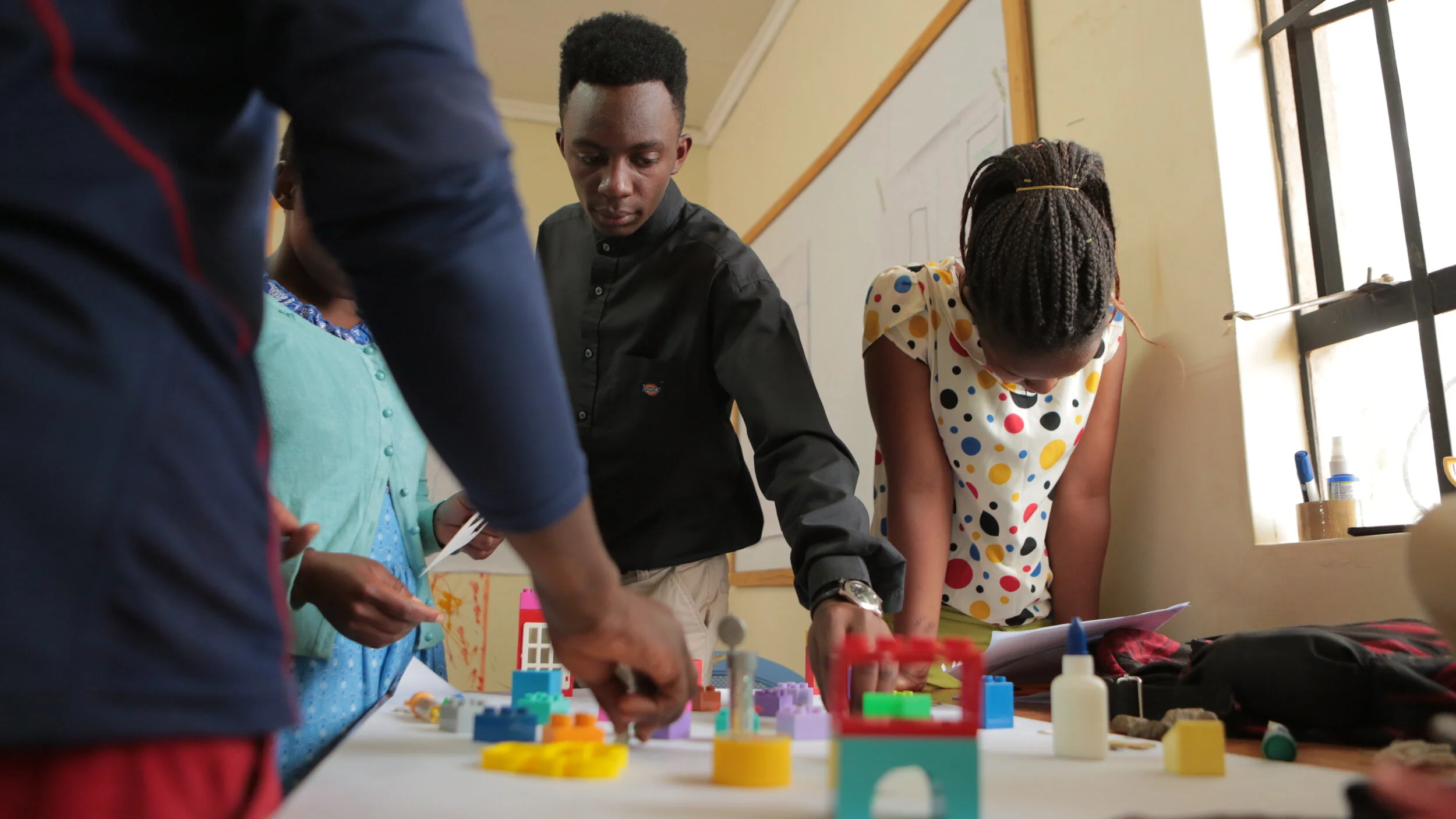HOW MIGHT WE SUPPORT INTERCULTURAL LEARNING WITH CREATIVE COMPUTING?
UNICEF Kenya asked us to help them address gaps in adolescent skill development in Nairobi and Kakuma refugee camp, two challenging environments for refugees of various ethnic backgrounds. Together we brainstormed: how might we create a play-based experience that’s personal, project-based and facilitates 21st century skills like intercultural competence?
THE BIG IDEA
Let’s use game-based pedagogy that is collaborative and grounded in play, to develop adolescents’ perspective, empathy and other critical skills.
IMAGE COURTESY OF NAIROBI PLAY PROJECT.
OUR DESIGN APPROACH
Using a human-centered design approach, we worked with UNICEF Kenya and community-based organization Xavier Project to design a curriculum aligned to the identified critical skills. We conducted a number of workshops with adolescents to experiment with diverse offline and tactile tools including Empathy Toys, Makey Makey, Scratch and paper-based games to gain a better understanding of adolescents’ interests. We prototyped activities to explore various intercultural concepts and integrated the use of these technologies to support a powerful learning experience. During user testing sessions, we observed and collected adolescent and facilitator feedback to shape the final activities for an effective program design.
TA-DA! THE OUTCOME
We created a hands on program, based on adolescents’ interests, that UNICEF Kenya could scale to other refugee settings. The curriculum provides participants with multiple hands-on design activities that are engaging, learner-centered and passion-based, and translate into tangible skills that achieve UNICEF Kenya’s desired learning outcomes.
Learn more at the Nairobi Play Project.
